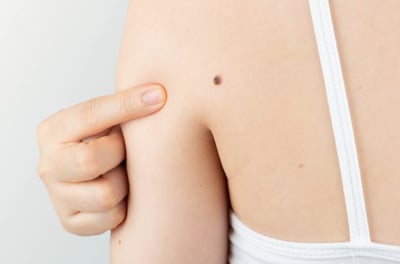
Skin cancer is the most common cancer in the United States, with 1 in 5 Americans developing it in their lifetime. Regular self-skin exams and a yearly skin cancer screening by your local dermatologist are crucial in finding the cancer early.
Not knowing what occurs in a skin screening can be a bit unnerving to a first timer. A typical skin cancer screening is a simple 10 minute appointment where a dermatologist examines your body looking for any areas of concern.
A skin cancer screening starts out with you changing into one those hospital style gowns we all know and love. Before the skin exam, your doctor will ask if you have any concern areas. Now is not the time to not be shy, point out any areas that you may have noticed changes in. According to Sean Pattee, MD, Board-Certified Dermatologist and Fellowship-Trained Mohs Surgeon with Forefront Dermatology, “the doctor will examine each part of your skin, and may use a special magnifying glass with a light—called a dermatoscope—to examine certain suspicious spots. If a suspicious lesion is identified, you may need a biopsy.”
A biopsy is a quick, simple procedure that helps diagnose the condition. A local anesthetic is applied and a small tissue sample is taken from the suspicious area. The sample is then sent to a pathology lab where results are determined. If the biopsy reveals skin cancer, the remainder of the growth will be removed at a later date.
Cryotherapy is another common and quick treatment that, if needed, is sometimes performed during a skin screening. A quick spray of liquid nitrogen is applied to a pre-cancerous lesion causing the tissue to freeze thus eliminating the need for any cutting.
Be Proactive
Remember, early detection saves lives and a simple, yearly in-office skin screening with your local board-certified Forefront Dermatologist can truly mean the difference between life and death. Contact us today to schedule your annual skin screening.





